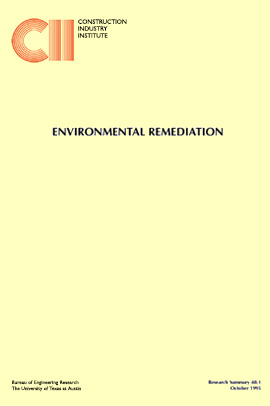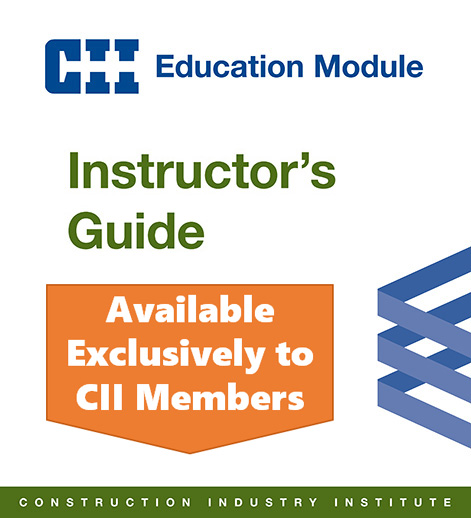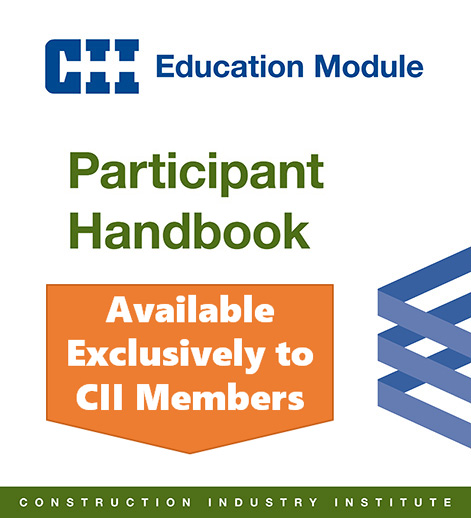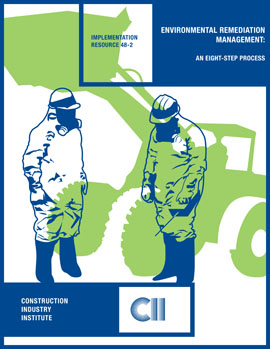
Environmental Remediation
Remediation of environmental contamination from past industrial practices represents a substantial percentage of annual expenditures by industry and government. Despite the experience gained with contaminated site remediation and development of new technologies, the ability to predict cost and schedule of remediation projects remains poor.
The Construction Industry Institute Environmental Remediation Technology Research Team, comprised of practicing environmental professionals and academics experienced in remediation, investigated reasons for the growth in cost and schedule of remediation projects and identified methods and procedures to control these cost and schedule issues.
The research concluded that: (1) remediation projects differ fundamentally from conventional construction projects because of uncertainties in site characterization, clean-up technology performance, and regulations; and (2) it is the effective management of these factors, rather than technological advances, that can result in the largest cost savings in the near term.
The research conducted resulted in three CII documents with the following themes:
Avoid the “Ready, Fire, Aim” Syndrome
Huge expenditures are at risk in environmental remediation projects. The eight-step process developed in CII Implementation Resource 48-2, Environmental Remediation Management: An Eight-Step Process, will save big money and prevent schedule delays for owners and contractors. Owners are counseled to proactively manage remediation projects to realize these savings. Contractor’s financial risks will be minimized by implementing these recommendations.
“Think First, Dig Later”
Documented cases of errors in excavating and handling of unexpected soil contamination on conventional construction projects, which could have been avoided, resulted in substantial extra costs and time delays. A path is charted for both owners and contractors in CII Implementation Resource 48-3, Influence of Potential Soil Contamination on Construction Projects, to manage these uncertainties and avoid unexpected problems.
“Old Ways Don’t Work Well”
Cooperative management approaches and more flexible contracting relations, as documented in CII Source Document 106, save cost and time for owners and contractors. The team’s research indicates that Turnkey and Design/Construct management structures are the most effective for remediation projects.
The three works cited above are summarized in this publication. Readers are encouraged to use these resources as they begin their next environmental remediation projects. Significant savings can be achieved through better planning, project execution, and use of technology.
This 8 step process provide a “roadmap” through the remediation process, along with the insights gleaned from the collective experience of the members of the CII Environmental Remediation Technology Research Team. Each step identifies key issues for management consideration. These steps are listed below and details are provided in the research. This environmental remediation process can be applied to any regulatory jurisdiction. (RS48-1, p. 2)
Step 1 - Problem Identification
Step 2 - Preliminary Remediation Planning
Step 3 - Site Characterization/Risk Assessment
Step 4 - Feasibility Study and Remedy Selection
Step 5 - Final Site Remediation Plan
Step 6 - Remedial Design Process
Step 7 - Remedial Construction Process
Step 8 - Post Remedial Construction Activities
Improper management of soil and water contamination issues can cause disproportionate project delays and cost growth. Project planning must consider the possibility of encountering contaminated soil or water. This research highlights ‘things to consider’ as part of the planning process that limits the impact of environmental site conditions on the project. The planning process will assist the management team in asking the right questions and knowing what to do with the answers. A few examples are listed below, while the research material includes the detailed research findings. (RS48-1, p. 6)
- Include contingency planning in the project schedule … plan for the unexpected
- Incorporate response and reporting procedures in the contractor’s scope of work
- Understand alternatives for handling and disposal of contaminated soil
- Be aware of cost and risk issues
The planning process includes specific planning suggestions for both:
- Soil contamination - consider the type of soil, where it can go, and cost to dispose (reference figure below)
- Groundwater contamination - can add significant expense to your project; avoid groundwater where possible



